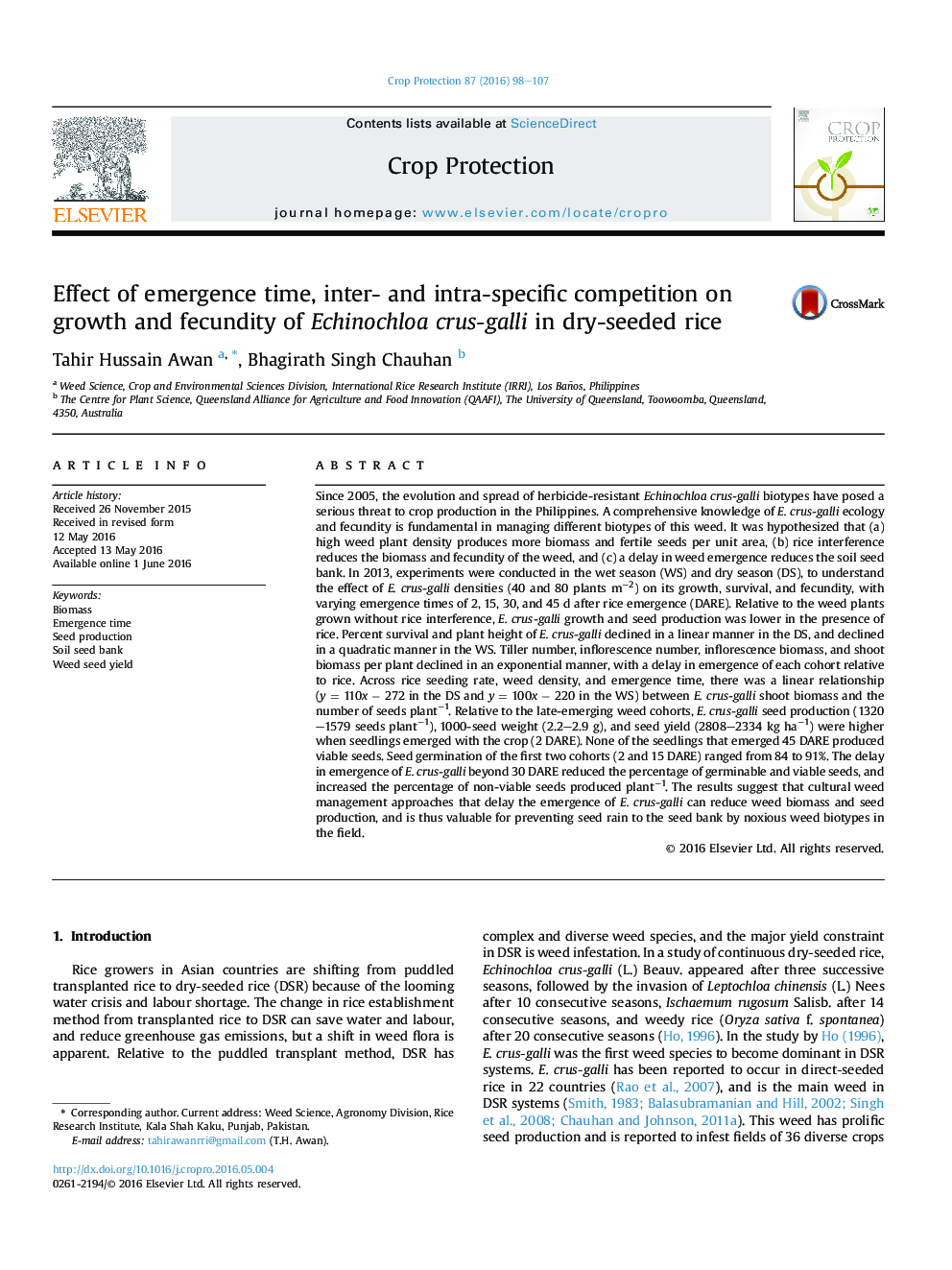| کد مقاله | کد نشریه | سال انتشار | مقاله انگلیسی | نسخه تمام متن |
|---|---|---|---|---|
| 4505559 | 1624300 | 2016 | 10 صفحه PDF | دانلود رایگان |

• Echinochloa crus-galli emerging within a month of crop emergence contribute to fertile seed production.
• Late emerging weed relative to rice had high mortality and reduced weed growth.
• Weed emerging beyond 45 d after rice emergence did not produce fertile seed.
• A delay in E. crus-galli emergence prevent the return of seed to the soil seed bank.
• Greater efforts are needed to control early-season emerging weeds.
Since 2005, the evolution and spread of herbicide-resistant Echinochloa crus-galli biotypes have posed a serious threat to crop production in the Philippines. A comprehensive knowledge of E. crus-galli ecology and fecundity is fundamental in managing different biotypes of this weed. It was hypothesized that (a) high weed plant density produces more biomass and fertile seeds per unit area, (b) rice interference reduces the biomass and fecundity of the weed, and (c) a delay in weed emergence reduces the soil seed bank. In 2013, experiments were conducted in the wet season (WS) and dry season (DS), to understand the effect of E. crus-galli densities (40 and 80 plants m−2) on its growth, survival, and fecundity, with varying emergence times of 2, 15, 30, and 45 d after rice emergence (DARE). Relative to the weed plants grown without rice interference, E. crus-galli growth and seed production was lower in the presence of rice. Percent survival and plant height of E. crus-galli declined in a linear manner in the DS, and declined in a quadratic manner in the WS. Tiller number, inflorescence number, inflorescence biomass, and shoot biomass per plant declined in an exponential manner, with a delay in emergence of each cohort relative to rice. Across rice seeding rate, weed density, and emergence time, there was a linear relationship (y = 110x − 272 in the DS and y = 100x − 220 in the WS) between E. crus-galli shoot biomass and the number of seeds plant−1. Relative to the late-emerging weed cohorts, E. crus-galli seed production (1320–1579 seeds plant−1), 1000-seed weight (2.2–2.9 g), and seed yield (2808–2334 kg ha−1) were higher when seedlings emerged with the crop (2 DARE). None of the seedlings that emerged 45 DARE produced viable seeds. Seed germination of the first two cohorts (2 and 15 DARE) ranged from 84 to 91%. The delay in emergence of E. crus-galli beyond 30 DARE reduced the percentage of germinable and viable seeds, and increased the percentage of non-viable seeds produced plant−1. The results suggest that cultural weed management approaches that delay the emergence of E. crus-galli can reduce weed biomass and seed production, and is thus valuable for preventing seed rain to the seed bank by noxious weed biotypes in the field.
Journal: Crop Protection - Volume 87, September 2016, Pages 98–107